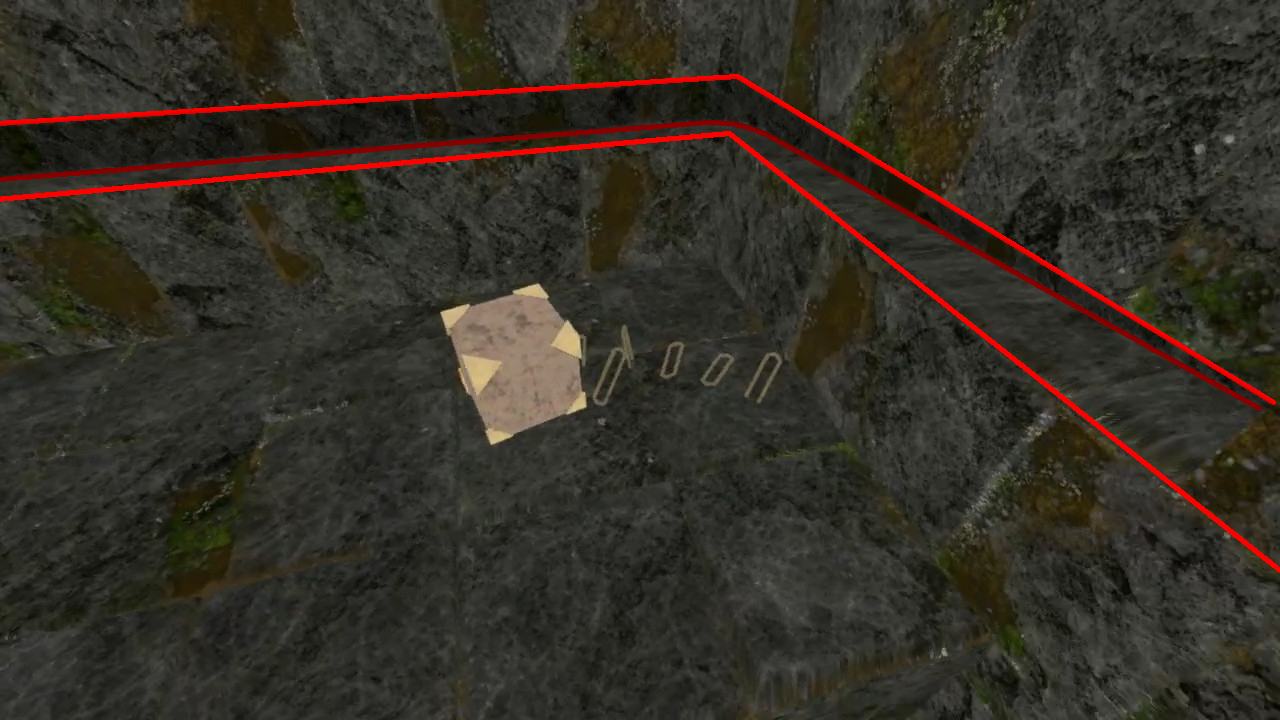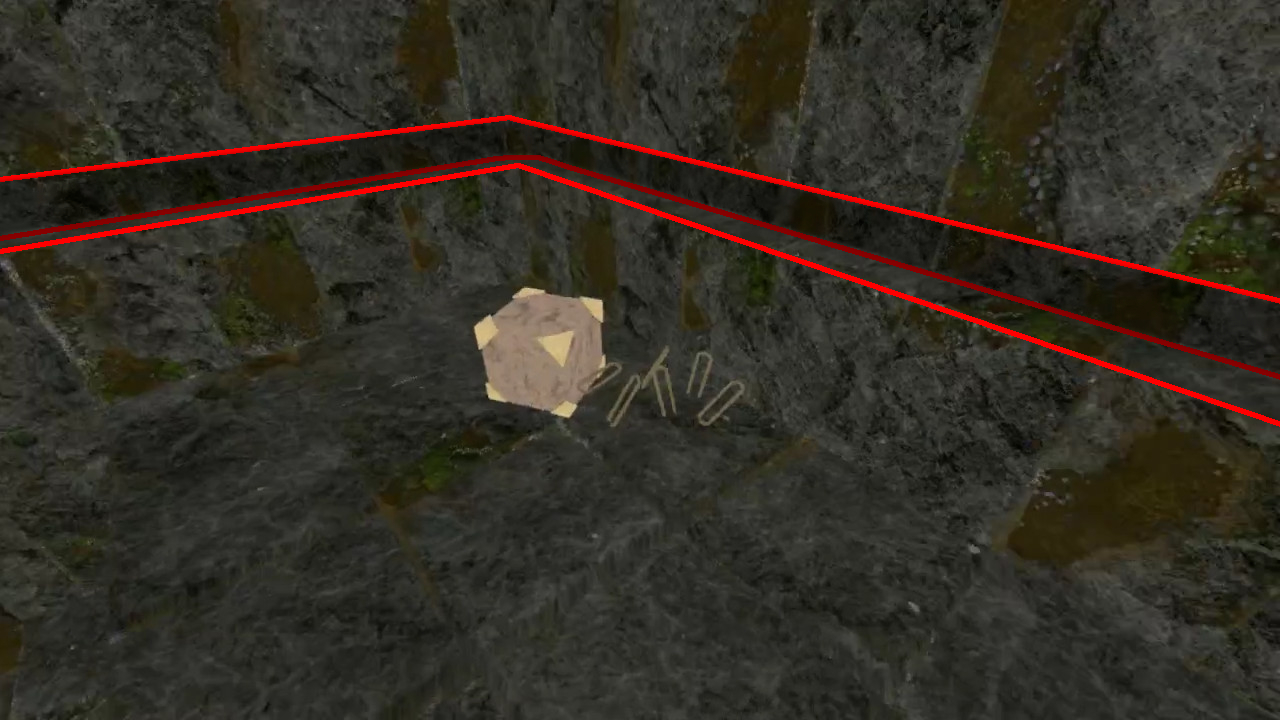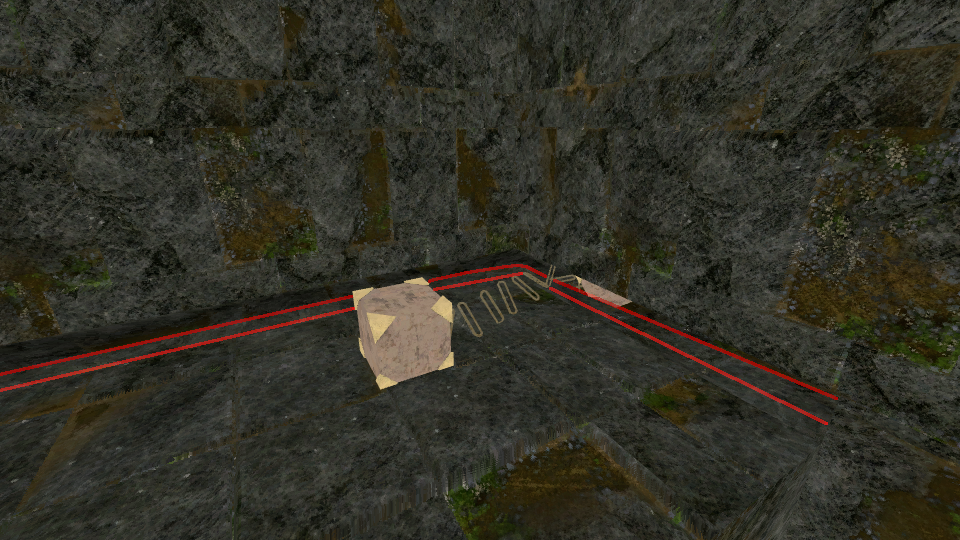MidLevelGameDev said:
Am I asking too much out of physics engines for wanting this?
Probably. Ropes/chains are generally difficult to get working robustly in basic scenarios, much less something like you are trying to do. It's hard to see exactly what is going on in your screenshots (it's very dark, I can't see the crevice and the rope visualization is hard to interpret).
I guess you are trying to get the rope to follow a complex path through the wall so that pulling on one side pulls the cube on the other side, and that might solve a puzzle or something.
To get that to work robustly you probably want a special case system to handle it that omits/abstracts the part of the rope inside the wall. Basically, you keep track of the rope length on either side, and connect a separate rope to the crevice on either side. If the user pulls on one side, you increase the length on that side and reduce the length (number of links or link spacing) on the other side. You can make the crevice connection point slightly inside the wall (i.e. 1 link worth of distance) to hide the length transitions. This should produce the desired behavior and will be much easier on the physics engine.
You can also try increasing the number of links in the chain. This will make the behavior more “rope like” and less like discrete links, but also will use more CPU, and can become unstable with a large number of links.
If ODE supports it, a “distance” constraint would be better than a ball and socket constraint. That will allow the rope to collapse on itself as it should when there is no tension. Ball and socket would prevent the links from being close together, and will make the rope seem more rigid and unnatural.







